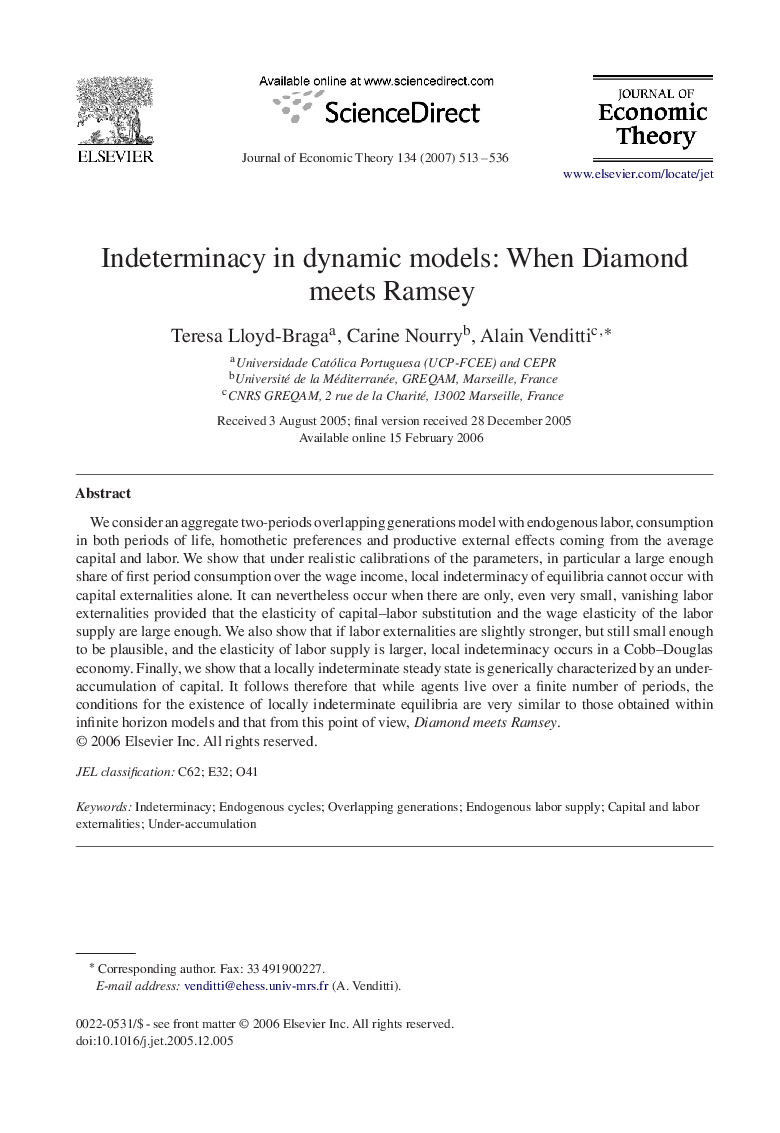| Article ID | Journal | Published Year | Pages | File Type |
|---|---|---|---|---|
| 957752 | Journal of Economic Theory | 2007 | 24 Pages |
We consider an aggregate two-periods overlapping generations model with endogenous labor, consumption in both periods of life, homothetic preferences and productive external effects coming from the average capital and labor. We show that under realistic calibrations of the parameters, in particular a large enough share of first period consumption over the wage income, local indeterminacy of equilibria cannot occur with capital externalities alone. It can nevertheless occur when there are only, even very small, vanishing labor externalities provided that the elasticity of capital–labor substitution and the wage elasticity of the labor supply are large enough. We also show that if labor externalities are slightly stronger, but still small enough to be plausible, and the elasticity of labor supply is larger, local indeterminacy occurs in a Cobb–Douglas economy. Finally, we show that a locally indeterminate steady state is generically characterized by an under-accumulation of capital. It follows therefore that while agents live over a finite number of periods, the conditions for the existence of locally indeterminate equilibria are very similar to those obtained within infinite horizon models and that from this point of view, Diamond meets Ramsey.
